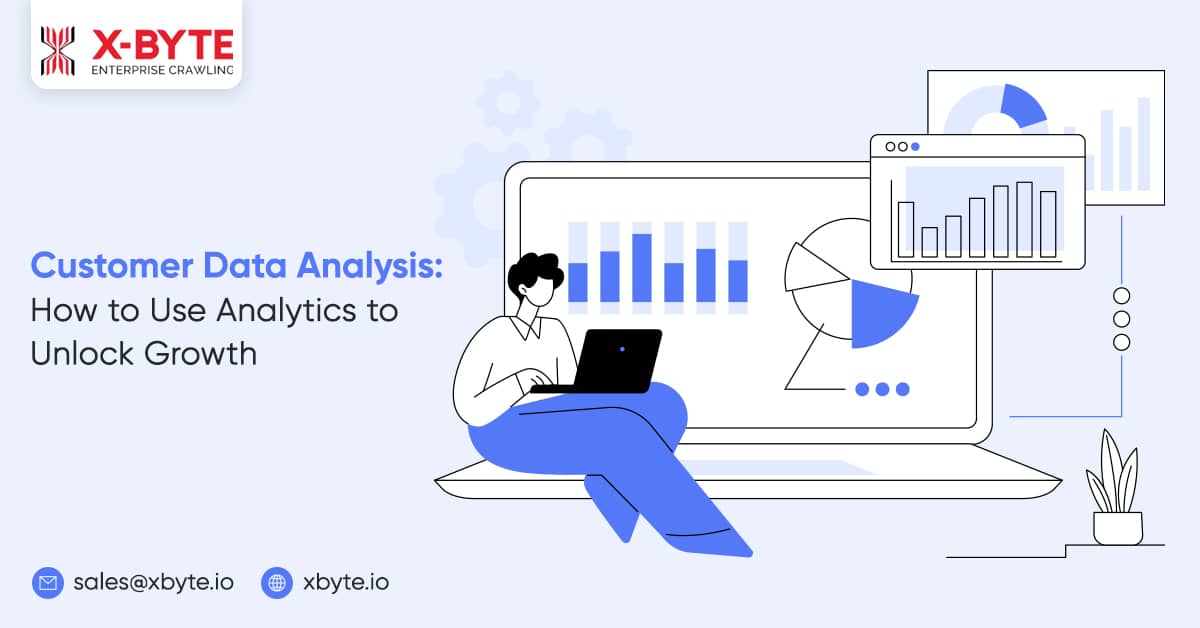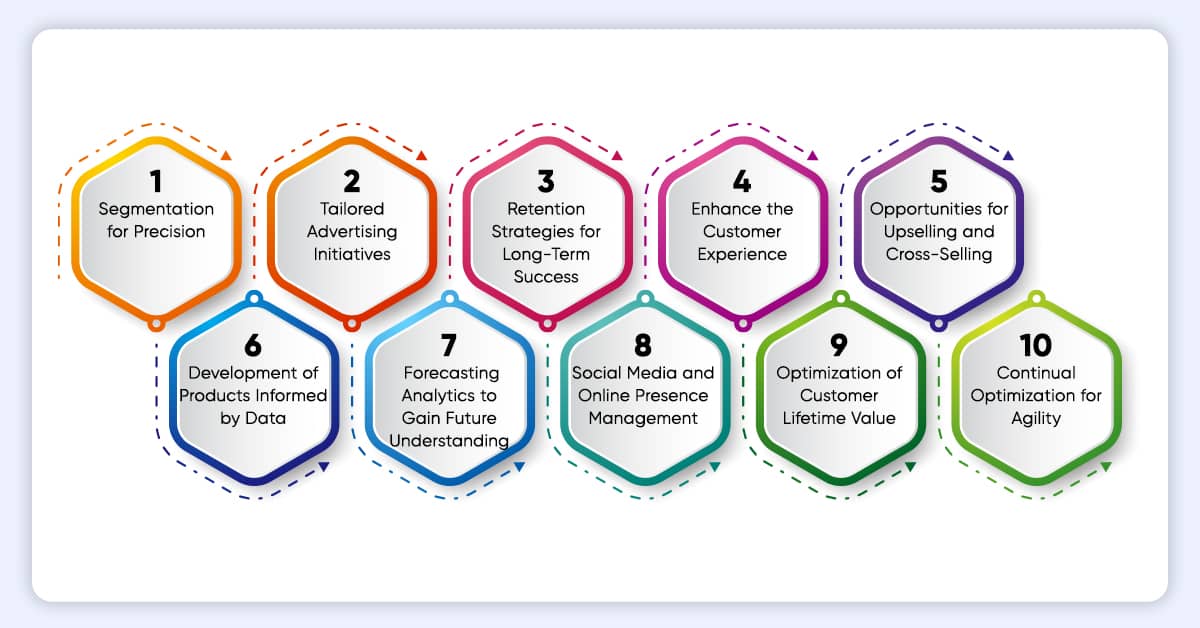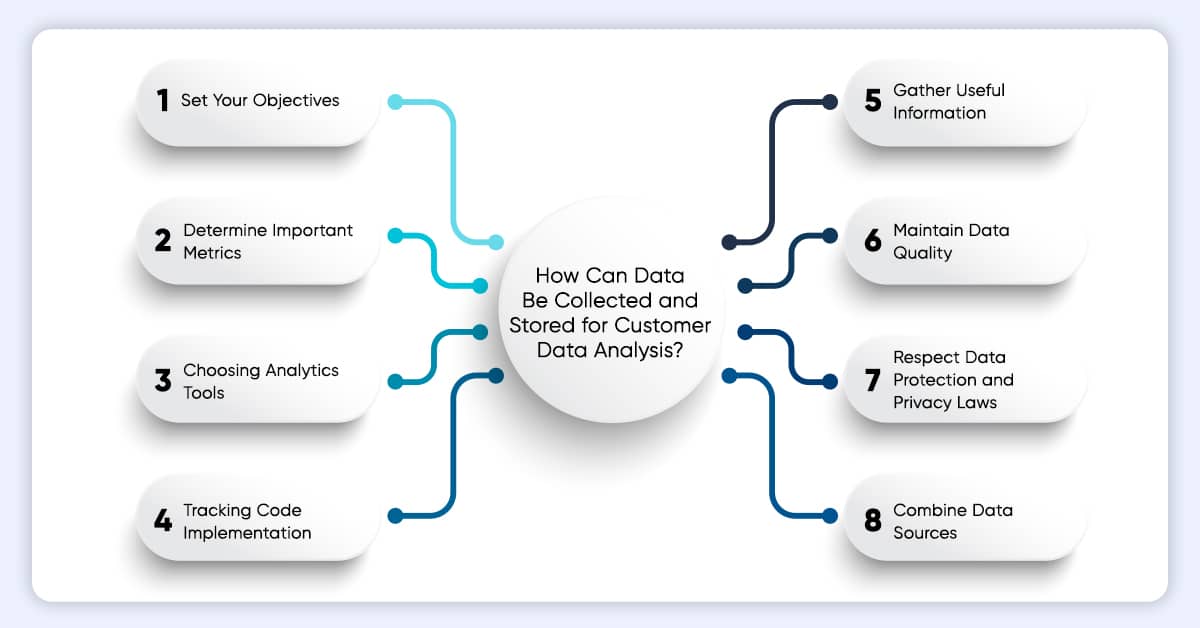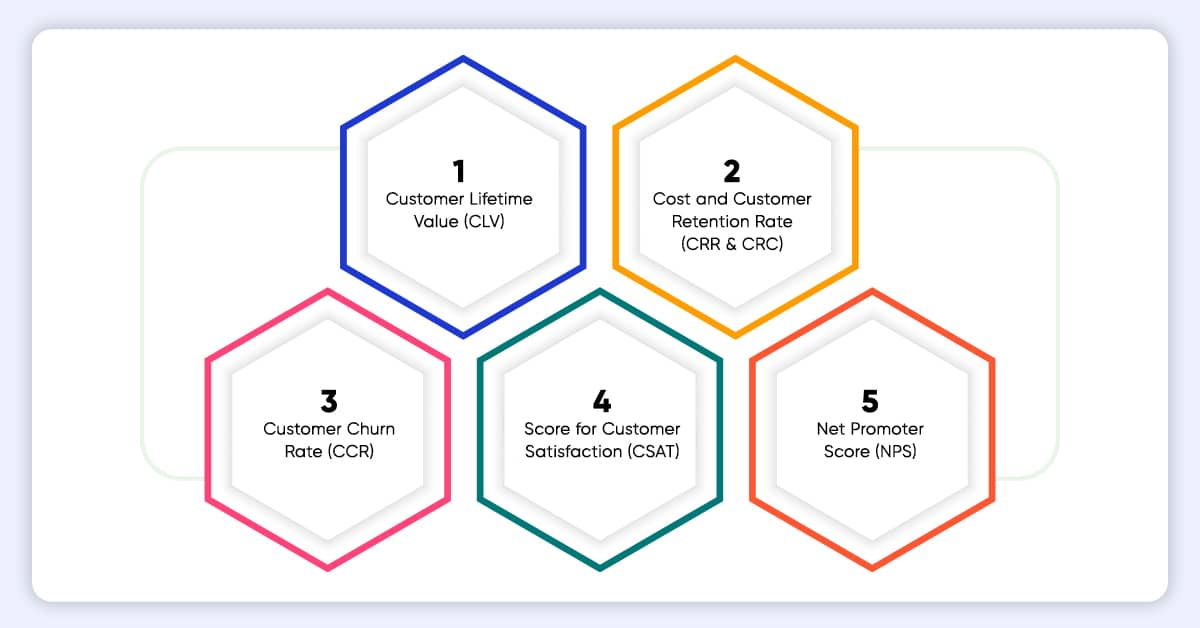
In this fast-paced world, businesses have become more competitive than ever before. Companies use data analytics to learn about customer behavior and gain valuable insights. Customer data analysis plays a very crucial role in gaining a broader perspective. It helps unlock more opportunities and help make informed decisions. Through this, businesses can boost customer satisfaction and thus drive profitably.
Analyzing customer data helps understand how customers behave and make informed decisions. It requires various tools to collect and organize different types of data. This also requires a methodological framework to analyze and understand the data.
Companies use analytics to make business decisions related to marketing, product development, sales, and more. Customer data analysis allows businesses to make informed decisions. It includes decisions ranging from the most simple ones to more complex ones. Through this, businesses can determine the growth and even existence of the company.
Why do Businesses Employ Consumer Analytics?

Consumer analytics involves using advanced tools to collect and analyze data. Using data wisely is essential for making informed decisions that support business growth. X-Byte is the leading analytics solutions provider that helps to remain competitive in the changing market scenario.
1. Segmentation for Precision
The foundation of customized marketing is customer segmentation. Businesses can create a customized strategy by categorizing clients based on demographics, behavior, and preferences. Identify separate segments associated with consumer Data Analytics Providers. It is to facilitate customized communication and product offerings that appeal to particular audience groups.
2. Tailored Advertising Initiatives
The days of marketing that fit all users are long gone. Businesses can design tailored campaigns that directly address the tastes and habits of specific customers by utilizing data. Make recommendations, promotions, and messaging more likely to pique your audience’s interest and foster loyalty by leveraging data insights.
3. Retention Strategies for Long-Term Success
While gaining new clients is vital, keeping hold of current ones is just as—if not more—important. Signs of client churn can be detected with the aid of customer analytics. Employ retention tactics to keep your current clientele interested and satisfied, such as customized discounts, special offers, or proactive communication.
4. Enhance the Customer Experience
A pleasant and seamless experience must be created by thoroughly understanding the client’s journey. Examine consumer input and touchpoints to find areas that need improvement. Utilize this data to improve client relations, streamline operations, and increase satisfaction and loyalty.
5. Opportunities for Upselling and Cross-Selling
Customer analytics reveals trends in consumer behavior, opening doors for upselling and cross-selling. Determine complementary goods and services, then market them to your clientele calculatedly.
6. Development of Products Informed by Data
Use analytics service provider to guide product development to stay ahead of market trends and customer expectations. Examine behavior data and consumer reviews to find areas that could use innovation and enhancement. This customer-focused strategy ensures that your products and services closely match the requirements and preferences of your intended market.
7. Forecasting Analytics to Gain Future Understanding
Use predictive analytics to predict future behavior from your customers. Businesses may remain ahead of the competition and proactively meet client demands by anticipating trends and preferences. Use these insights to hone your tactics and establish your brand as a pioneer in the field.
8. Social Media and Online Presence Management
Use customer analytics to monitor social media and online platforms and trends and sentiment. Engage your audience in conversation, address criticism, and take care of your online image. Client trust and brand loyalty are greatly enhanced by having a robust online presence.
9. Optimization of Customer Lifetime Value
To determine how valuable a user is in the long run, calculate and analyze their Customer Lifetime Value (CLV). To increase total revenue, concentrate on attracting and keeping valuable clients. We should prioritize initiatives that have a significant impact on our success. Use CLV insights to guide resource allocation.
10. Continual Optimization for Agility
Analyzing customers is a continual activity rather than an isolated effort. Review and adjust plans regularly in light of fresh information and changing market dynamics. This strategy helps your company stay flexible and ready for long-term success.
Which Departments Make Use of Consumer Analytics?
Consumer analytics helps businesses make sound decisions with ease. It can be used by several departments but with different purposes. Through this, it becomes easy to understand the market scenario and potential challenges.
Marketing Teams
The team performs marketing activities to expand business operations. They use consumer profiling to design tailored campaigns, optimize messages, and track results.
Product Development Teams
This team helps determine the preferences and requirements of customers. Based on this, they enhance existing features and generate new concepts for products that satisfy market demand.
Customer Care Teams
Customer care teams are responsible for providing ongoing support. They help in enhancing the entire consumer experience by identifying typical concerns. They are also responsible for improving response times and optimizing support channels.
Sales Teams
The team uses customer segmentation to develop sales tactics. They also find upselling and cross-selling opportunities. Sales leaders utilize these performance indicators to create targets. They also enhance internal procedures and correctly anticipate future sales and income.
How Can Data Be Collected and Stored for Customer Data Analysis?

Collecting and storing data is the first and crucial step for a company to understand its targeted audiences to improve the quality and service of its product.
Set Your Objectives
Clearly stating the aims and purposes of the data collection on consumer analytics. Recognize the precise insights you hope to obtain from the data.
Determine Important Metrics
Ascertain which key performance indicators (KPIs) correspond with your objectives. These could include purchase histories, online or app usage patterns, and consumer demographics.
Choosing Analytics Tools
Choose the right analytics tools for your needs. Several well-liked options are Kissmetrics, Mixpanel, Google Analytics, and others. Additionally, some companies create unique analytics programs.
Tracking Code Implementation
Set up the tracking code your selected analytics tool sends to your website or mobile application. This code will gather data on user activity and interactions.
Gather Useful Information
Gather information that is in line with your predetermined objectives and KPIs. Page views, click-through rates, conversion rates, client demographics, and other pertinent data may be included in this.
Maintain Data Quality
To guarantee correctness and dependability, audit and validate the data regularly. Use data validation procedures to weed out inaccurate or irrelevant data.
Respect Data Protection and Privacy Laws
Observe laws like the CCPA and GDPR that address data protection and privacy. Make sure users are aware of your data-gathering policies and have the choice to opt out if needed.
Combine Data Sources:
For a complete perspective, combine data from many sources if your company uses a variety of platforms or applications. CRM programs, marketing automation tools, and customer care software are a few examples of this.
Best Practices for Customer Data Analysis
Here are the top consumer data analysis techniques to help you make business decisions while keeping those three stages in mind.
Consider People While Evaluating Analytics, Not Simply Groups:
Businesses can find specific problems by looking at individual data, which might not appear in group analysis.
Select The Results That You Desire
Give the business insights you wish to employ your full attention. For this, it is important to analyze the data thoroughly to have the desired results.
Decide What Matters Most
Determine the most crucial data inputs for your brand. Consider contact center interactions and social media activity.
Data Should Be Cleaned And Consolidated
This is the point at which you must combine data from several systems into a single, central place.
Examine the Information
Cut and dice the data to uncover your conclusions. Avoid pressuring the outcome. Acknowledge the findings.
Maintain the Optimization of Past Choices
Continued data analysis is essential to fine-tuning your judgments. Utilise AI to instantly edit and improve data. Use AI and machine learning to optimize your unique consumer interactions.
Automate Data Extraction And Gathering So You May Concentrate On Your Primary Skills:
You may accelerate consumer analytics efforts and save time for other crucial business activities. This can be done by using solutions like data analytics software and automated data extraction procedures.
Typical Metrics for Consumer Data Analysis

These are some standard metrics of analytics services providers that businesses can use.
Customer Lifetime Value (CLV)
Client lifetime value, or CLV, calculates the total money a business may anticipate making from a specific client relationship over time. It’s among the most effective strategies to connect revenue with customer success initiatives.
Cost and Customer Retention Rate (CRR & CRC)
Customer retention rate (CRR) calculates the proportion of current clients your company has held onto over a specific time frame, such as a month, quarter, or year. It informs you on the success of your customer success initiatives.
Customer Churn Rate (CCR)
Customer churn, also known as customer attrition, defection, or turnover, is the inverse of customer retention and quantifies the number of clients lost in a specific time (typically a month).
Score for Customer Satisfaction (CSAT)
The customer satisfaction score (CSAT) shows how happy customers are with your organization. It’s based on their answers to your questions and ratings.
Net Promoter Score (NPS)
The Net Promoter Score (NPS) is a scale that measures how likely customers are to recommend a business or product to a friend. It uses a 10-point scale and asks customers one question.” Reactions are categorized as follows:
Detractors = 0 to 6
Passives = 7 or 8
Promoters = 9 or 10
Final Thoughts: Understand your Customers with Customer Analytics
Customer analytics is critical for understanding users and cultivating user connections. If your company uses consumer data correctly, it will achieve its expected results. It delivers useful information that enables firms to build closer relationships with their devoted consumers.
The most well-known businesses nowadays have an in-depth understanding of consumer analytics. Businesses need to invest in a customer analytics stack. Because it helps boost business by providing a better experience.
Customer analytics may make a significant difference in your company’s bottom line. Even while X-Byte is a Great Data Analytics Provider, integrating customer analytics gives a much stronger connection with its consumers.
